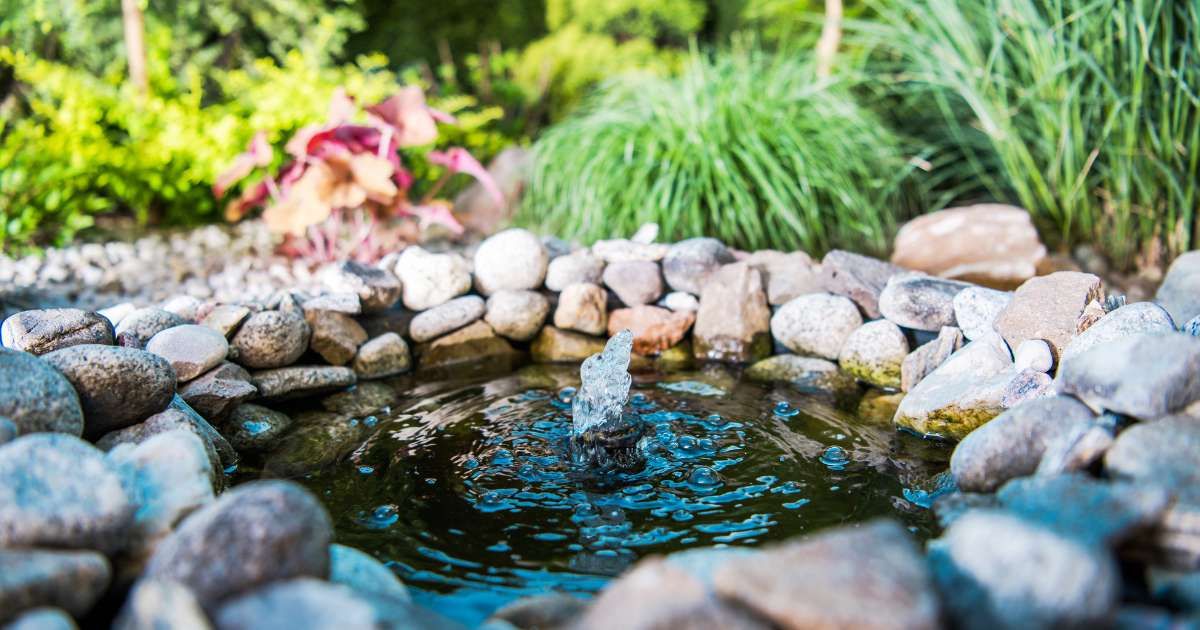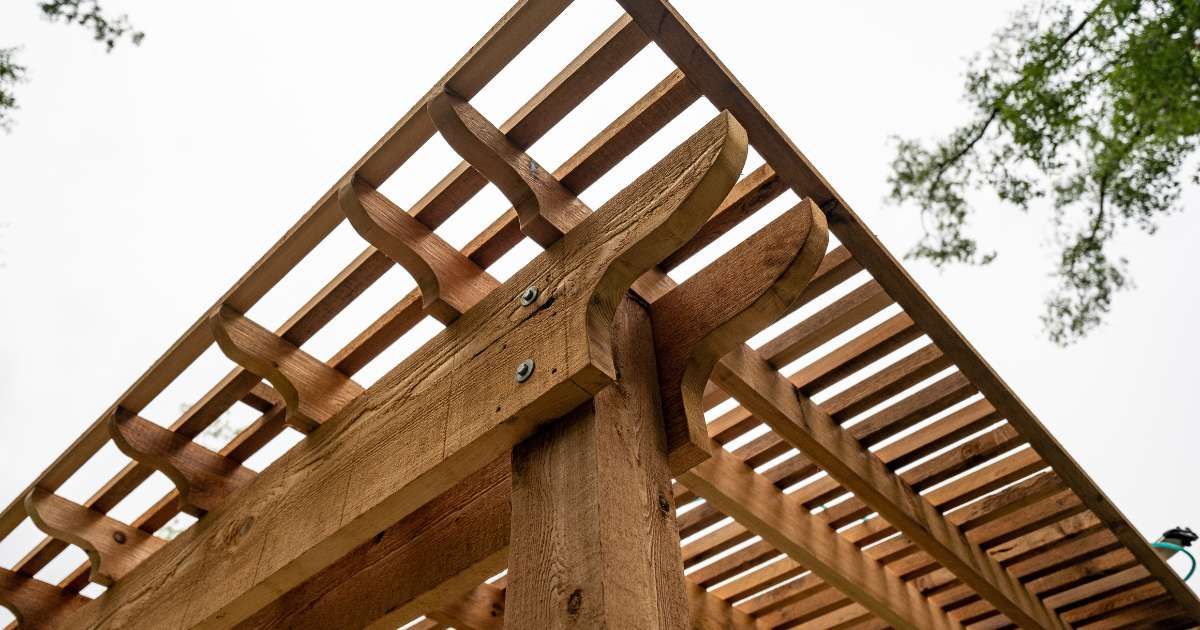Resolut Blog
Backyard Landscaping Techniques to Block Neighbourhood Noise

Backyards are supposed to be a place to enjoy the outdoors. However, constant interruptions such as traffic, barking dogs, and loud neighbours can disrupt your relaxation.
Noise pollution is a common issue in residential areas, and its constant presence can transform your backyard retreat into a source of frustration.
Fortunately, there are many backyard noise reduction solutions that can help. Let’s explore the power of landscaping to block neighbourhood noise and provide a peaceful, backyard experience.
1. Install a Noise Reducing Fence
When it comes to reclaiming the tranquility of your backyard, a tall, sturdy fence is your best friend.
By creating a physical barrier, the fence works to absorb and reflect sound waves, effectively blocking out the noise that disrupts your outdoor enjoyment. The denser and more solid the noise-blocking fence, the better it will be at reflecting noise.
Not every fence is suitable for noise reduction, there are certain materials you need to use to block out sound. Masonry walls made of stone or stucco-covered concrete are considered the best materials for bouncing off sound waves. However, these materials may not be in every homeowner’s budget.
Solid wood fences are a great alternative to prevent noise and are more affordable to install than stone or concrete.
The design of a noise-blocking fence can also affect how well it can soundproof your backyard.
Solid fences with no gaps are your best bet, as they prevent sound waves from sneaking through cracks and openings.
Height matters too: the taller your fence, the more it acts as a sound barrier. Building it as tall as local regulations allow will reduce noise.
Be sure your fence extends all the way to the ground, eliminating any gaps underneath. This will help to significantly reduce noise infiltration.
If you can see where the noise is coming from, you’re more likely to hear it, so removing the source of the noise from your vision helps a tad bit more.
While noise-blocking fences serve a practical purpose, they often fall short in the looks department. But there's a simple solution that not only beautifies your backyard but also helps reduce noise: plants! Evergreen trees and shrubs, in particular, can dramatically enhance the appearance of a fence, softening its hard lines and adding a touch of natural beauty.
As a bonus, dense foliage acts as a natural sound barrier, absorbing sound waves and creating a more peaceful environment.
A well-built fence that is tall and has no gaps is the most effective way to drown out loud noises. Choosing materials that can boost noise reduction while adding specific plants can create a more peaceful, private space for your backyard activities.
2. Integrate Plants
While all plants offer some degree of sound absorption, evergreens stand out as particularly effective noise reducers. Unlike deciduous plants that lose their leaves in the fall, evergreens provide a consistent sound barrier throughout the year. Their dense foliage acts like a natural soundproofing blanket, absorbing and diffusing noise to create a more peaceful atmosphere.
Evergreens like Arborvitae, Leyland Cypress, and Boxwood are excellent choices for adding privacy and greenery to your backyard. When paired with a fence, the dense leaves and height of these evergreens create a powerful barrier that can help reduce noise.
Hollies, Junipers, Dogwood, Magnolia, Plum, and Cherry trees are also beautiful options that can also help reduce noise in your backyard.
To maximize noise reduction, design your planting bed in layers. Start with tall evergreens at the back, then add a mix of flowering trees and shrubs in the front rows. This layered approach creates a denser barrier, absorbing more sound.
For even better results, consider creating mounds of soil to place plants to add height, resulting in further sound absorption.
The closer the plants and shrubs are to the source of noise, the better they will reduce sound. Position plants and shrubs to block your view of the noise source, especially around areas where you want to relax. This strategic placement will help minimize the noise that reaches your ears and create a more peaceful backyard.
Strategically integrating plants not only helps reduce unwanted sounds but also enhances the aesthetics and privacy of your backyard. With careful selection and specific placement of plants, you can reap the benefits of a naturally beautiful, and quieter outdoor space during all four seasons.

3. Install a Water Feature
Water features introduce calming background noises that can dilute unwanted sounds in your backyard. The sound of running water creates a white noise effect that helps drown out less desirable sounds like chatty neighbours, barking dogs, or loud music. The gentle, yet consistent noise can add to the aesthetic appeal of your backyard and transform it into a tranquil retreat.
There are many types of water features to consider, depending on the amount of room and budget. Basic fountains, such as birdbaths with recirculation pumps, are easy to install, adding a light touch of luxury and pleasant sounds of water.
For a more extravagant effect, consider installing streams, waterfalls, or ponds with recirculating water. These larger decorations can create a serene auditory experience, enhancing the overall atmosphere of your backyard.
Where you place your water features matters for effective of noise reduction. To maximize their noise-masking abilities, place them close to the areas where you spend the most time, such as seating areas or patios. The closer the water feature is to the listener, the more it can distract from unwanted sounds. Placing each installation near the house can also help mask noise from busy streets or loud neighbours.
By installing water features into your backyard, you not only add to the beauty of your backyard but also create a peaceful auditory mask that helps block out constant noise. This combination of visual and audio enhancements can remarkably improve the overall atmosphere of your outdoor living space, making it more peaceful and relaxing.
4. Create Visual Barriers
Psychoacoustics, or how our brains make sense of sound, plays an interesting role in how we perceive noise in our environment.
When the source of noise is hidden from view, our brains are less likely to register the noise as an interruption, making it easier to relax and enjoy your backyard. Visual barriers, such as trees and shrubs, can noticeably reduce the mental impact of unwanted sounds by creating an “out of sight, out of mind” approach.
Strategically planting trees and shrubs to block sight lines from screaming children, honking horns, or barking dogs can create a significant psychological barrier. Even if the actual noise level doesn’t change dramatically, the perception of a quieter environment can improve your overall comfort and satisfaction with your backyard quiet time.
As we discussed earlier, for year-round noise reduction and visual appeal, consider adding a mix of evergreen and seasonal plants. In addition to evergreens, incorporating seasonal plants can add beauty to your backyard.
Hydrangeas, lilacs, and spirea are popular options that provide vibrant colours and fragrances throughout spring and summer. These plants not only enhance the landscape of your backyard but also contribute to the subconscious reduction of noise by creating an elegant, and warm-coloured environment.
Remember to strategically plant these flowers in layered planting beds can boost their effectiveness. Start in the back with tall evergreens to build a solid visual barrier, and then add layers of shrubs and seasonal plants in front.
By taking advantage of psychoacoustics and using visual barriers, you can create a backyard retreat that feels more pleasant and secluded. Combining both evergreen and seasonal plants will provide year-round relaxation and attractive visuals, making your outdoor space a more enjoyable place to independently read a book or spend quality time with family.

5. Additional Noise-Cancelling Techniques
In addition to fences, plants, and water features, there are other strong methods to reduce unpleasant noise in your backyard.
Outdoor speakers can be a great solution to distract from irritating sounds. By playing soothing music or nature sounds like birds chirping or beach waves, you can create an auditory experience that helps drown out unwanted disturbances. These speakers can be discreetly placed around your backyard, even designed to blend in with the landscape of your backyard, such as faux rocks or planters.
Sheds can serve as physical barriers, blocking sound waves and adding storage space.
Pergolas and trellises when combined with climbing plants create a natural sound barrier.
Sunken patios can lower the noise level by physically distancing your seating area from the sight of noise, utilizing the “out of sight, out of mind” technique.
Creating a peaceful backyard with no interruptions involves using fences, plants, water installations, outdoor speakers, and structures. By combining these methods, you can significantly reduce persistent noise and enhance the atmosphere of your outdoor living space.
Resolut Construction specializes in building fences and decks designed to make your backyard more enjoyable. Let us assist in constructing sturdy fences that successfully block noise, as well as visually appealing decks that enhance your backyard experience. Contact us today to start our journey to a quieter, more peaceful backyard paradise.
Contributors
Latest Posts
Show All Recent Posts
Archive
-
2025
-
2024
-
December
-
November
-
October
-
August
-
July
-
June
-
May
-
April
-
March
-
February
-
January
-
-
2023
-
December
-
November
-
October
-
September
-
August
-
July
-
June
-
May
-
April
- Kitchener Waterloo Residential Fence: Buying Guide
- Incorporating Fencing into your Landscaping Design
- Choose a Chain Link Fence Installer You Can Trust
- Prepare Your Backyard for Summer: Outdoor Organization Ideas
- 7 Essential Tips For Your Kitchener Waterloo Fencing Project
- A Comprehensive Guide For Making Your Fence Pet-Friendly
-
March
-

